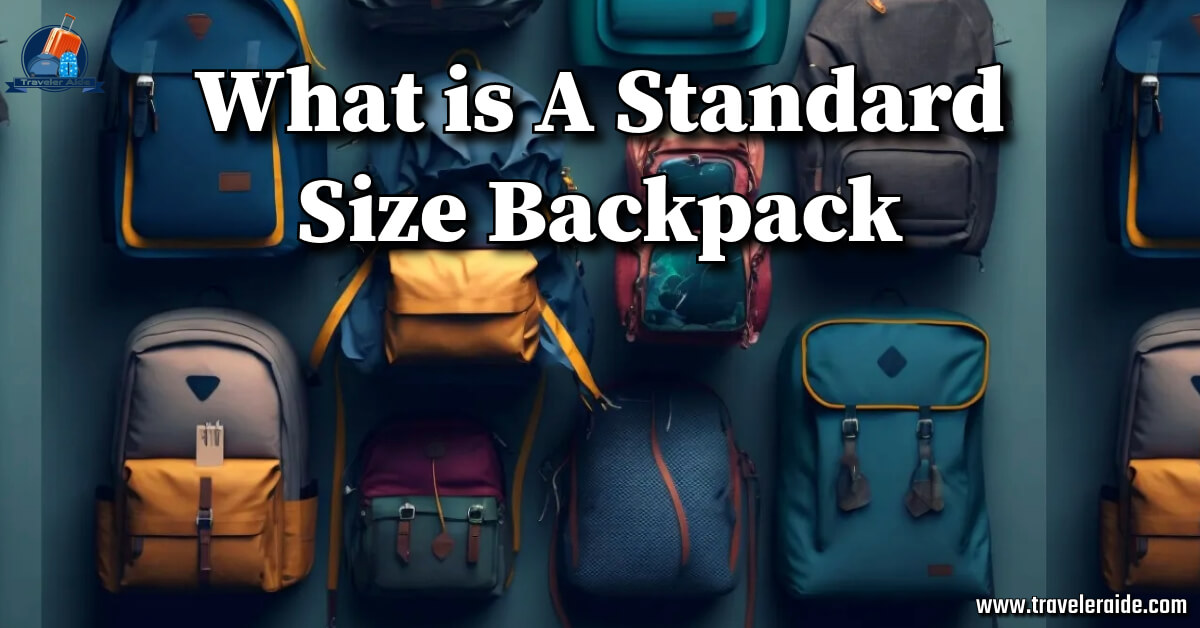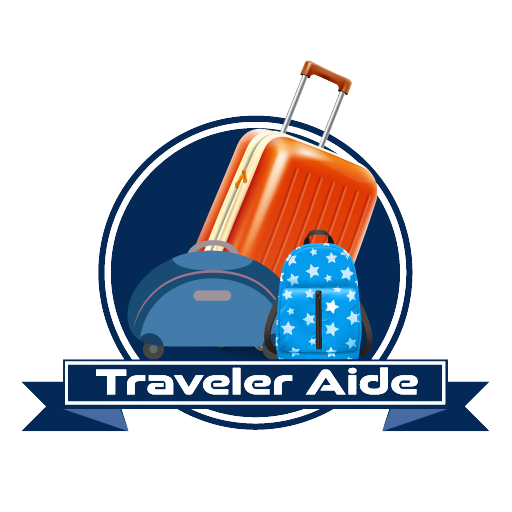We take our backpacks with us everywhere, like a reliable friend. But have you ever thought about what a “Standard Size Backpack” is or which would fit you best? We’ll look at all the different types of backpacks, find out what standard size backpacks are best for kids of different ages, and figure out what size is best for a regular school bag.
Besides that, we’ll show you how to choose the right bag for your needs. When we’re done, we’ll show you how to pick the best backpack for school, travel, or your everyday adventures. Allow us to begin!
Types Of Backpacks
Backpacks come in many shapes and sizes, each designed to meet a particular need. Here are some common types:
Daypacks: These are small to medium-sized bags that you can use for regular things like going to school, work, or just hanging out. They can hold between 15 and 30 liters of stuff.
Hiking backpacks: These are for people who like to go on trips outside. They are different sizes. You might need 20 to 40 liters of room for short walks. For longer trips, though, you might need 50–80 liters or even more.
Backpacks for school: These are made for kids. Most of the time, they hold about 15 to 20 liters. That’s enough space for school supplies, lunch, books, and notes.
Packing bags for trips: Packing bags for trips is excellent. They can hold 30 to 40 liters and up to 80 liters or more in the bigger ones. They can be used for both short trips and long trips.
Different uses require different types of backpacks. Photographers use camera backpacks. Walkers use water packs. Workers use the laptop (how to strap) backpacks. They have parts that make these things easy to do.
Standard sized Backpack Dimensions by Age Group
Backpack Standard Size By Age
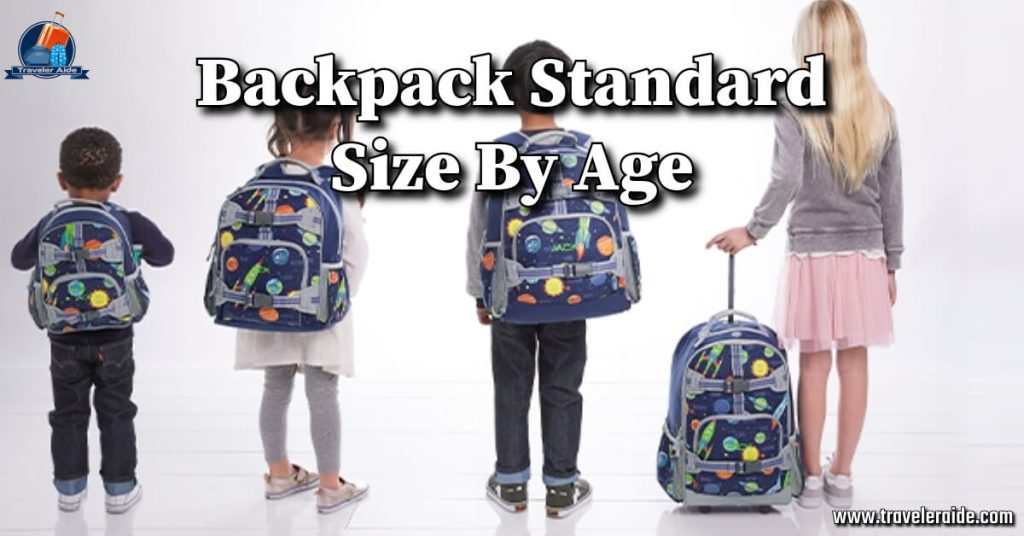
Backpack sizes can change based on the age of the person using it. Here’s a general rule of thumb:
| Age | Backpack volume (liters) | Maximum load (kg) |
| 3-4 | 6-9 | 1.5 |
| 5-6 | 10-12 | 2 |
| 6-8 | 15-18 | 3 |
| 8-10 | 16-20 | 5 |
| 11-14 | 18-24 | 6 |
| 15-18 | 20-28 | 7 |
| 18+ | 25+ | 10+ |
Remember that these are just basic ideas. As a kid grows, their needs change, such as how tall they are, how big their things are, and how much they need to carry to school. It’s essential to get a bag that fits well and feels good. They might get back and hip pain if the backpack is too big or heavy.
Then, we can answer the question, “What Is A standard size backpack for School?”
What Is A Regular-Size Backpack For School?
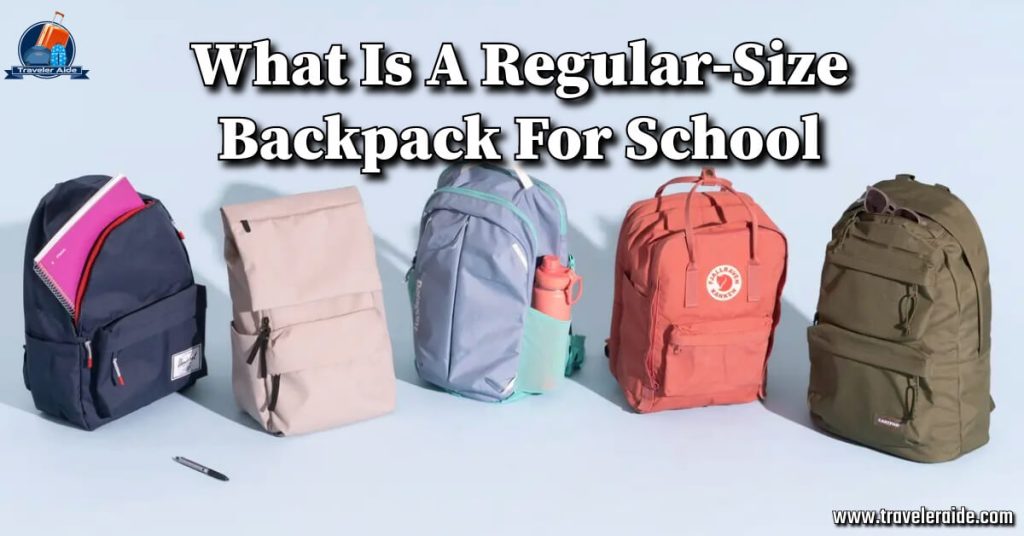
Elementary and high school kids use backpacks like any other bag. These bags are pretty helpful, and they all have the same features:
Space: Most of the time, they have 12 to 20 liters of space for school supplies like notes, folders, and books. Some of the bigger ones can hold up to 25 liters of water.
Pockets: These backpacks usually have a lot of bags, like a big one for books and a place just for a laptop or tablet. Little pockets are also there for your keys, pens, pencils, and other small things.
Comfort: They have padded straps and a padded back that make them easy to wear, even when you have a lot to carry. You can also find the right fit for the straps.
Strength: Normal school bags are strong. They can be worn daily because they are made of solid materials like polyester or nylon.
Style: These bags have a lot of different looks, so you can choose one that goes with your taste.
Getting Inside: When you get inside, most have zippers that make them easy to open and close. Some also have side pockets where you can put your water bottle.
Safety: Some school bags have bright colors that make you stand out at night. When it’s sunny outside, this is important if you walk or ride your bike to school.
Plan out the ideal school backpack by considering your needs and preferences. If you need additional room for books or athletic equipment, upgrade. It’s okay if you have a smaller bag. Just ensure it’s not too tight and doesn’t hurt your back.
We can now calculate the approximate volume of a backpack (bear grylls use).
How To Estimate Backpack Capacity?
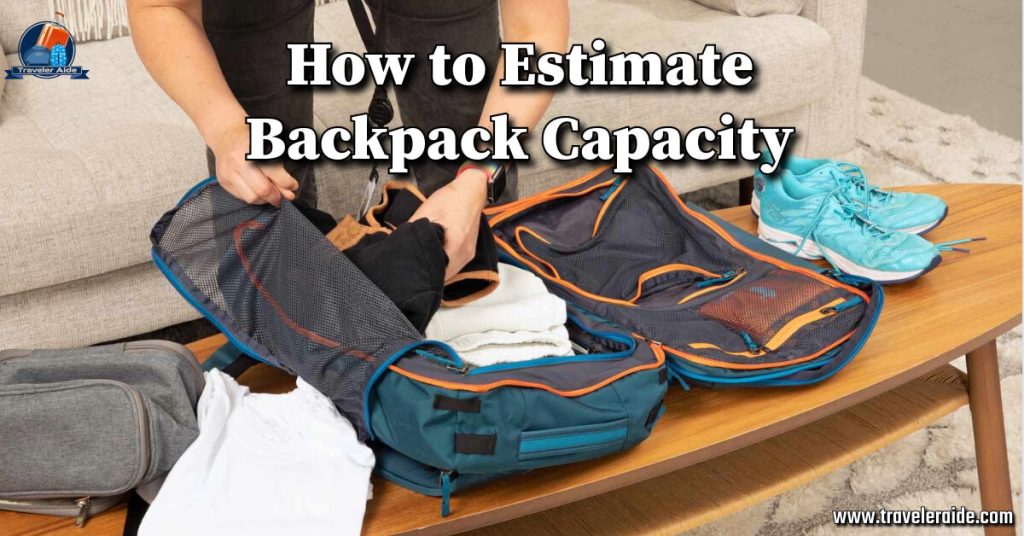
You must guess how much it can hold to ensure you get the right size bag. To find out how much your bag can have, do these things:
Get your things ready: Put clothes, books, a notebook, and other essential items in your bag.
Sort Your Things: Sort your things into groups based on size and shape. For example, put your laptop and gadgets in a different pile than your books and notes. Also, put more minor things like pens, keys, and toiletries in a separate bank.
Use a measuring container: A big bag or container for measuring can be helpful. A measuring container could be something like a plastic storage bin or a big food bag whose size is known.
Fill the Measuring Container: Begin putting your grouped things into the measuring container one group at a time. Ensure the items are stacked neatly and closely together to make the most of the room.
Repeat for Each Group: Do this repeatedly for each set of things. Think about everything you usually put in your bag.
Measure the Space: Once you’ve put your items in the measuring cup, figure out how much space they take up. You can find the area in liters by multiplying the container’s length, width, and height. Try to guess how much space your things take up, even if messy.
Add It Up: Add up how much room each group of things takes up. This tells you how big your daily bag needs to be.
Extra Space: Choose a more giant bag than you need. So, you’ll have room for things that come up or days when you want to take more.
Remember that this is just a guess, and bag sizes can vary. So that your back doesn’t hurt, make sure the backpack fits well and feels good.
Here are some answers to frequently asked questions about A Standard Size Backpack (dry in rain collage).
FAQs On What Is A Standard Size Backpack
What Size Backpack Do Most People Use?
Most people use a 20- to 30-liter bag for everyday use. This size is a good compromise between holding all your belongings and being easy to carry. Many people like it because it’s flexible and can be used in different settings.
How Big Is A Normal Backpack In Centimeters?
Backpacks come in various sizes, but the most common ones are about 30 cm wide, 45 cm tall, and 15 cm deep. These sizes may be different for each style and brand, though. When looking for a bag, you should always check the exact measures.
What Size Bag Should I Get For Everyday Use?
One that holds 20 to 30 liters of stuff is suitable for everyday use. It’s big enough to have all your daily needs, whether you need them for work, school, or everyday life. The best size may, however, rely on your wants and comfort.
Which Type Of Backpack Is An A4 Size?
A4-sized papers and paperwork can fit in an A4-sized bag. Most of the time, these bags have a special place for you to put your pieces. Workers, students, and anyone else who needs to keep their papers safe often use them.
Video On Backpack Size Guide
Conclusion With Key Takeaways
Now that we’ve finished talking about standard size backpacks, let’s go over the most important things we learned:
- Types of Backpacks: There are different (ideal size) backpacks for school, trips, and hobbies outside.
- Size and Age: Backpacks come in different sizes to fit people of all ages. For ease, it’s essential to choose the right size.
- Regular School bag: A 15- to 20-liter bag is usually enough for school. You can put your school stuff and books in it.
- Estimating Size: Consider what you want to carry to find the right bag size. This way, your bag will be just the right size.
- Questions People Ask: We answered some frequently asked questions about the types of (how to wash an osprey) backpacks. That is the most usual size. How big is it in centimeters? What size is suitable for everyday use or things that are A4?
Now that you know these things, you can choose a bag that fits your needs, whether for school, travel, fun outdoors, or everyday items. When you go shopping for the best bag, remember these tips. It is ready to be your perfect friend on trips and daily life. Have fun shopping for your purse!

Meet Travis Bryant, a TravelerAide author specializing in handbags. With a passion for travel essentials, Travis shares expert insights on choosing the right handbag.

